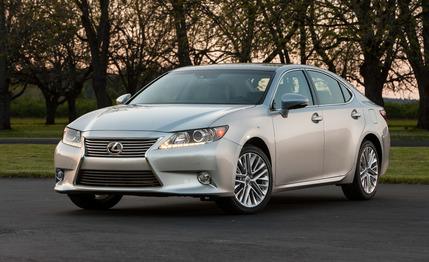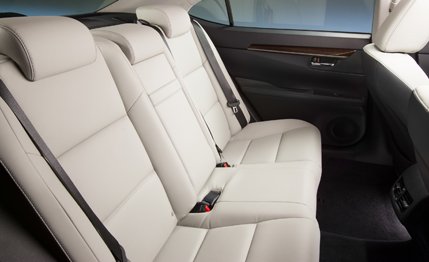
 First Drive Review
First Drive Review
Since its inception in 1989, the Lexus ES line has traded on its core values of composed practicality, restrained styling, and understated luxury. It has worked hard to distance itself from its pedestrian Toyota Camry roots, and it’s not about to compromise its dignity with a flashy makeover just to get the neighbors talking. Let the Lexus LFA and LX lux-UV shoulder the fuel-swilling, in-your-face grandstanding for the brand; the ES is quite content in its role as an amiable friend to the aspirational masses. So when it came time to create the sixth-generation ES, Lexus made sure not to wander far from the same predictable formula that has put more than one million examples of the car on the road to date.
Check Me Out, or Don’t
In addition to the still cautious but slightly more-outgoing styling, the redesign yields minor gains in size. The ES350 grows an inch in overall length to 192.7 and 1.7 inches in wheelbase to 111.0; height increases 0.8 inch to 57.1, while width stays the same at 71.7 inches.
Lexus is particularly proud of the ES’s 0.27 coefficient of drag, which it says betters the previous generation’s number by .01. In a quest for improved high-speed stability, tiny aero “stabilizing fins” have been placed on the doorframe covers and rear combination lamps; Lexus says they pull the airstream closer to the body, creating vortices that in turn stabilize the vehicle. Similar fins reside on the underbody covers.


The big news inside is a small increase in seating room. Front-seat passengers gain a minuscule 0.1 inch of headroom and 0.3 inch of shoulder room; increases hardly worth mentioning except to contrast the comparatively large gains made in the back seat where headroom grows by 0.7 inch, and legroom is up a whopping 4.1 inches. Lexus attributes the impetus of this change to emerging markets such as China, where it is quite popular for a car owner to be chauffer-driven on a regular basis. Rear shoulder room is down by 1.3 inches; we’ll assume that this is not a comment on that key Asian demographic.
Plop down into one of the standard 10-way power front seats, and you’ll notice the long, flat dash that reaches from door to door, Lexus’s take on the industry’s move away from the cocooning, driver-focused interiors of a few years back. Across the top erupts a single row of stitching, placed there by the hands of one of Lexus’s takumi craftspeople—according to the company, only twelve or so current employees are capable of such work. Impressive to be sure, but Lexus plans on selling 60,000 2013 ES models in the U.S. alone; someone might want to notify the H.R. department of possible production bottlenecks in the dash-upholstery department.